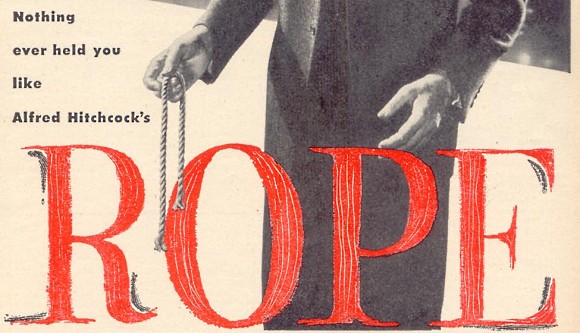Rope
July 24, 2009 ・ Blog

You can smell films that are based on plays a mile off. It must be difficult to take a story made for the stage and perform it in front of a camera without theatre’s static nature and wordiness making itself obvious. It’s certainly a clear part of Rope, Hitchcock’s 1948 flick about Nietzschean Ivy League gays attempting to commit the perfect murder. The film is great fun, mixing high tension with a sharp sense of humour, and as such comes highly recommended.
Rope was heavily adapted from its original, a play by Patrick Hamilton based on the Leopold and Loeb murder, in order to transplant the story from its roots in the British upper classes to the flatter class system of the US. But despite all the work, Hitchcock decided to film it in single takes of around 10 minutes, with the cast navigating a set that had to be at least as cleverly designed as any for the stage and the camera sporting an unflinching gaze like that of a theatre audience.
It’s ironic that the film that’s been called Hitchcock’s most experimental has the air of something as ancient as theatre. But Hitchcock brings in one or two little tricks that only film can achieve. In a couple of places, he has conversation go on as the camera remains fixed on a certain element for dramatic effect - for instance, the box in which the victim’s body lies, which is being fussed around by the housekeeper even as the dinner party guests discuss where the victim could be.
As with many Hitchcock films, Rope wears its cinematic technique heavily, with takes spliced awkwardly into each other by zooming into a character’s back, fading to black and then brightening out again into the next, but, heck, we’re talking about 1948. And its staginess feels quite exotic now, a relief from today’s unrelenting action and movement.
Theatre’s need to concentrate on character, dialogue and plot can remind film of some of basic tenets that many recent releases seem to have forgotten. Yes, films should always be built using technique and artistry specific to film, but Rope reminds that other narrative arts, such as theatre, still have a lot to teach them, too.